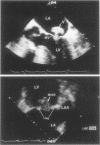Abstract
Fungal endocarditis is rare and is usually caused by Aspergillus and Candida species. We present a patient with endocarditis caused by Scopulariopsis brevicaulis. The patient had a history of mitral valve disease and, 1 year earlier, had undergone valvuloplasty with the placement of a prosthetic Duran ring in the mitral valve position. S. brevicaulis was cultured from samples of a large vegetation on the mitral valve apparatus. The mitral valve was replaced with a St. Jude mechanical prosthesis. The patient was treated with amphotericin B but was later switched to oral itraconazole when antibiotic tests indicated susceptibility to that agent. We believe this is the 1st reported case of endocarditis caused by Scopulariopsis.
Full text
PDF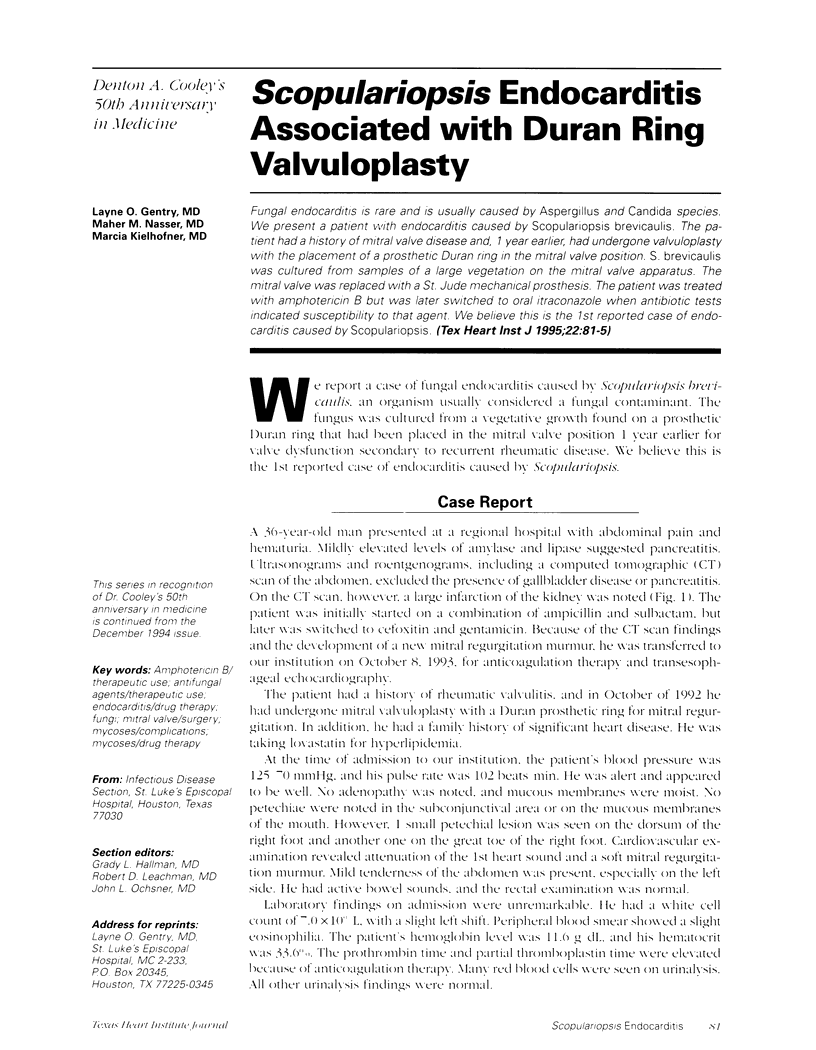
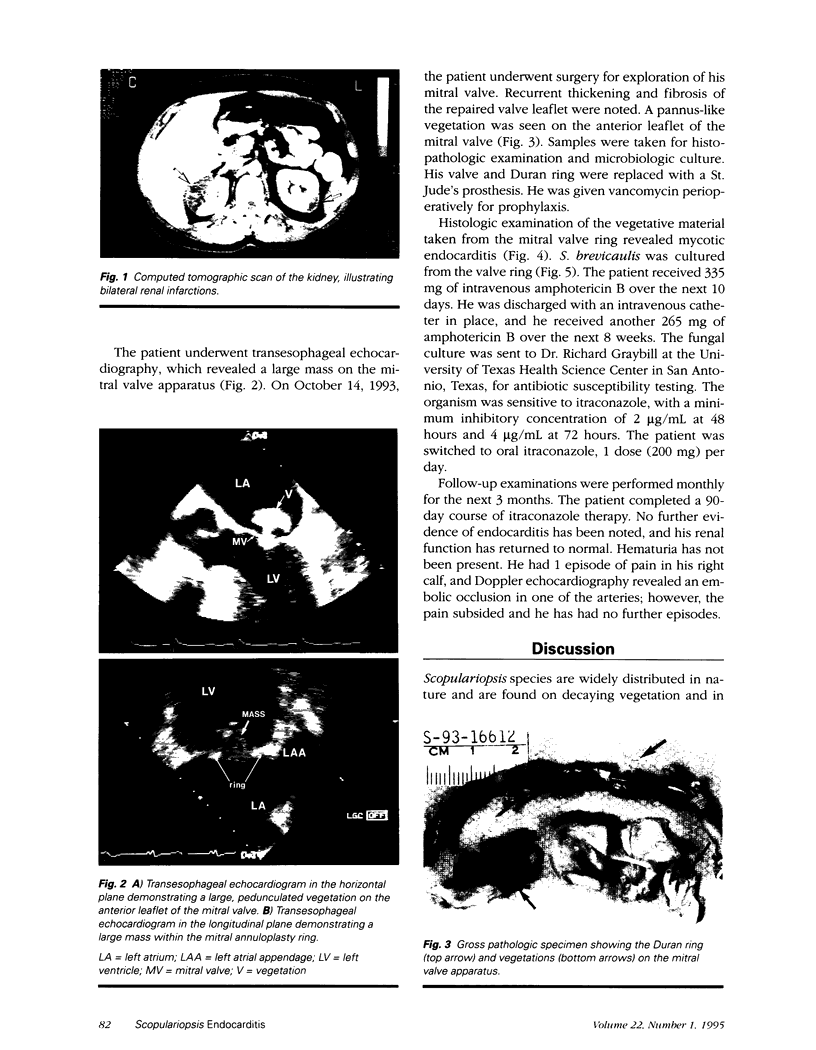
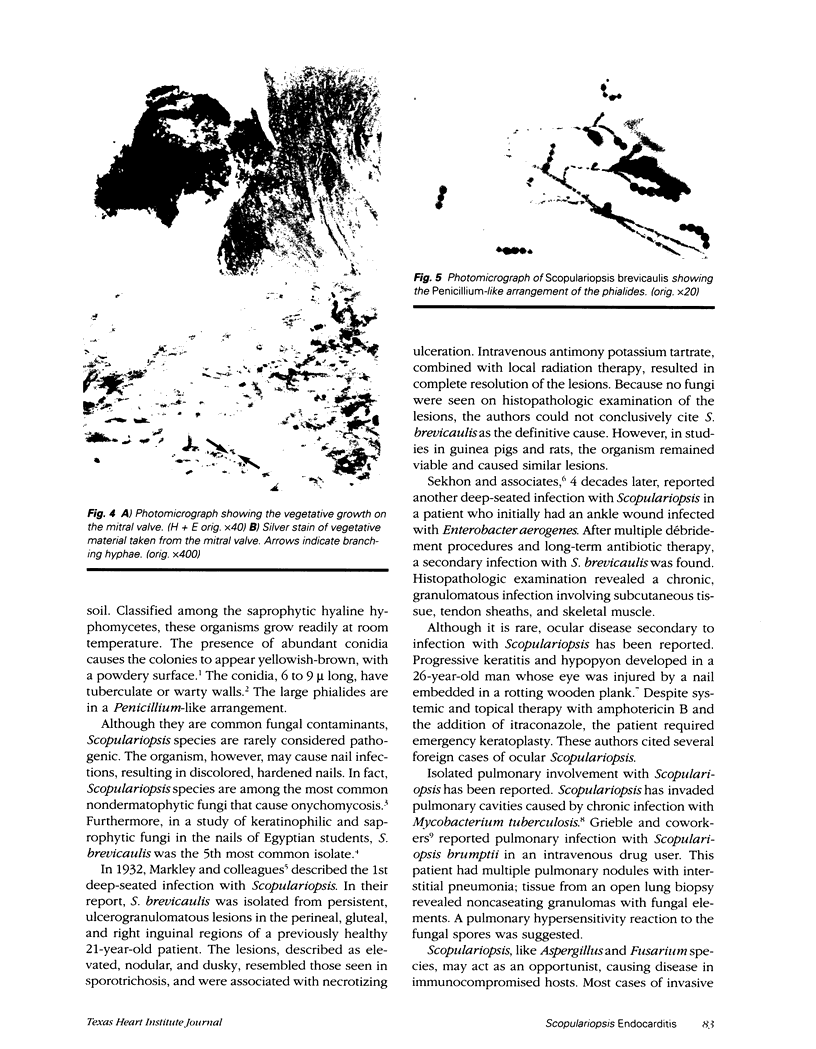
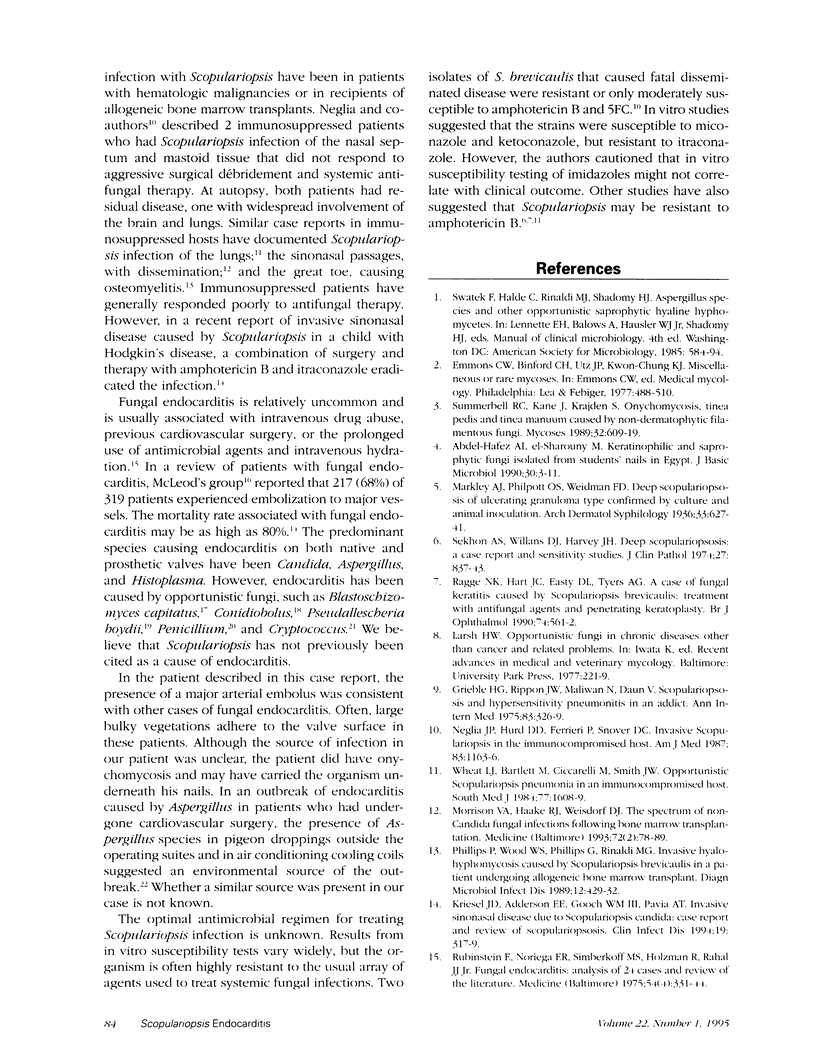
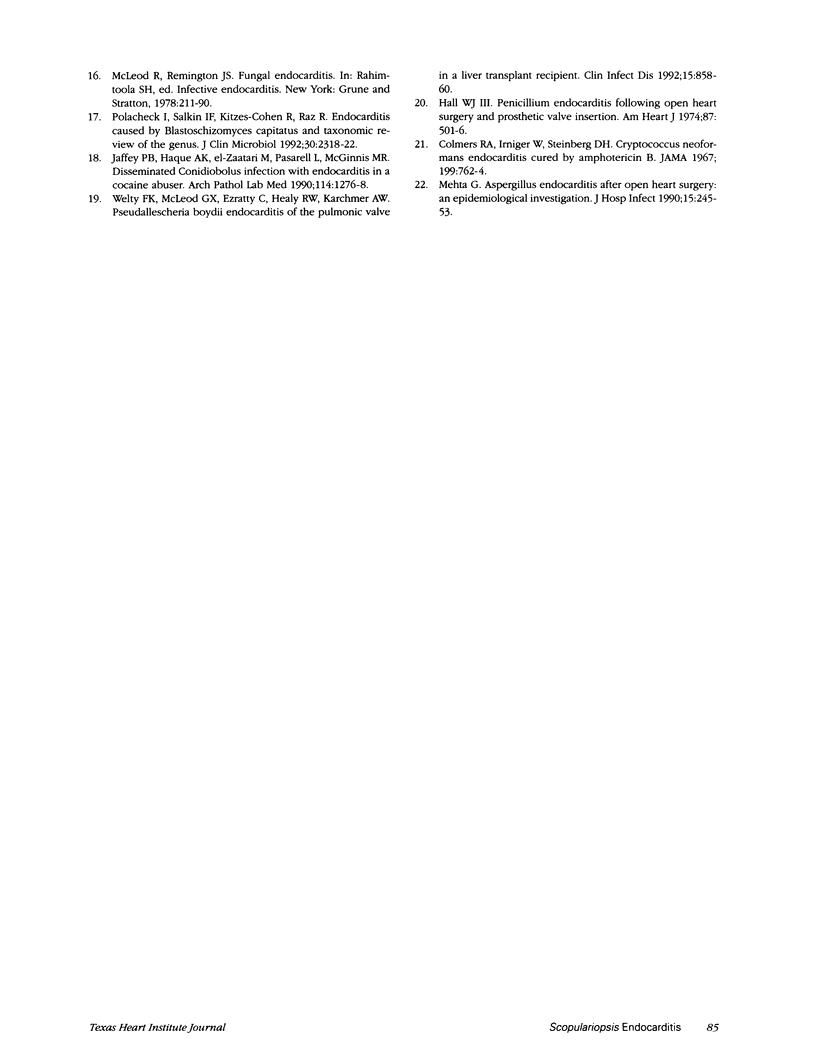
Images in this article
Selected References
These references are in PubMed. This may not be the complete list of references from this article.
- Abdel-Hafez A. I., el-Sharouny H. M. Keratinophilic and saprophytic fungi isolated from students' nails in Egypt. J Basic Microbiol. 1990;30(1):3–11. [PubMed] [Google Scholar]
- Colmers R. A., Irniger W., Steinberg D. H. Cryptococcus neoformans endocarditis cured by amphotericin B. JAMA. 1967 Mar 6;199(10):762–764. [PubMed] [Google Scholar]
- Grieble H. G., Rippon J. W., Maliwan N., Daun V. Scopulariopsosis and hypersensitivity pneumonitis in an addict. Ann Intern Med. 1975 Sep;83(3):326–329. doi: 10.7326/0003-4819-83-3-326. [DOI] [PubMed] [Google Scholar]
- Hall W. J., 3rd Penicillium endocarditis following open heart surgery and prosthetic valve insertion. Am Heart J. 1974 Apr;87(4):501–506. doi: 10.1016/0002-8703(74)90176-8. [DOI] [PubMed] [Google Scholar]
- Jaffey P. B., Haque A. K., el-Zaatari M., Pasarell L., McGinnis M. R. Disseminated Conidiobolus infection with endocarditis in a cocaine abuser. Arch Pathol Lab Med. 1990 Dec;114(12):1276–1278. [PubMed] [Google Scholar]
- Kriesel J. D., Adderson E. E., Gooch W. M., 3rd, Pavia A. T. Invasive sinonasal disease due to Scopulariopsis candida: case report and review of scopulariopsosis. Clin Infect Dis. 1994 Aug;19(2):317–319. doi: 10.1093/clinids/19.2.317. [DOI] [PubMed] [Google Scholar]
- Mehta G. Aspergillus endocarditis after open heart surgery: an epidemiological investigation. J Hosp Infect. 1990 Apr;15(3):245–253. doi: 10.1016/0195-6701(90)90032-j. [DOI] [PubMed] [Google Scholar]
- Morrison V. A., Haake R. J., Weisdorf D. J. The spectrum of non-Candida fungal infections following bone marrow transplantation. Medicine (Baltimore) 1993 Mar;72(2):78–89. doi: 10.1097/00005792-199303000-00002. [DOI] [PubMed] [Google Scholar]
- Neglia J. P., Hurd D. D., Ferrieri P., Snover D. C. Invasive Scopulariopsis in the immunocompromised host. Am J Med. 1987 Dec;83(6):1163–1166. doi: 10.1016/0002-9343(87)90961-2. [DOI] [PubMed] [Google Scholar]
- Phillips P., Wood W. S., Phillips G., Rinaldi M. G. Invasive hyalohyphomycosis caused by Scopulariopsis brevicaulis in a patient undergoing allogeneic bone marrow transplant. Diagn Microbiol Infect Dis. 1989 Sep-Oct;12(5):429–432. doi: 10.1016/0732-8893(89)90114-4. [DOI] [PubMed] [Google Scholar]
- Polacheck I., Salkin I. F., Kitzes-Cohen R., Raz R. Endocarditis caused by Blastoschizomyces capitatus and taxonomic review of the genus. J Clin Microbiol. 1992 Sep;30(9):2318–2322. doi: 10.1128/jcm.30.9.2318-2322.1992. [DOI] [PMC free article] [PubMed] [Google Scholar]
- Summerbell R. C., Kane J., Krajden S. Onychomycosis, tinea pedis and tinea manuum caused by non-dermatophytic filamentous fungi. Mycoses. 1989 Dec;32(12):609–619. doi: 10.1111/j.1439-0507.1989.tb02192.x. [DOI] [PubMed] [Google Scholar]
- Welty F. K., McLeod G. X., Ezratty C., Healy R. W., Karchmer A. W. Pseudallescheria boydii endocarditis of the pulmonic valve in a liver transplant recipient. Clin Infect Dis. 1992 Nov;15(5):858–860. doi: 10.1093/clind/15.5.858. [DOI] [PubMed] [Google Scholar]




